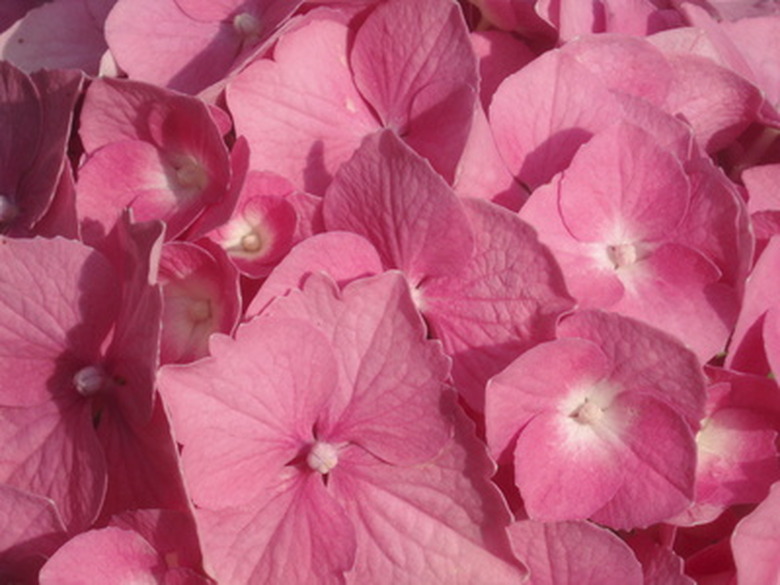Hydrangeas & Rusty Nails
Hydrangeas have a reputation as the chameleons of the garden. These shrubs produce flowers that may bloom in shades of blue or pink. According to folklore, all it takes to change a hydrangea's color to blue is to bury a rusty nail in among the roots.
Misconceptions
Hydrangeas actually do not change colors due to the presence or absence of a rusty nail or other rusting metal in the soil. Many hydrangeas may change their color from pink to blue without having rusty nails buried in the roots of the plant. The color of a hydrangea is a factor of the soil's pH and the amount of aluminum in the soil.
Types
Hydrangeas with red blossoms do not take up aluminum from the soil. Hydrangeas that produce blue blossoms take up aluminum that is present in the soil. The color of the hydrangea may also be a genetic trait. Certain hydrangeas, such as 'Peegee' or 'Annabelle' produce white blooms that do not change colors. Of the hydrangea varieties that change color, the hue may be determined by the plant's genetic traits.
- Hydrangeas have a reputation as the chameleons of the garden.
- Many hydrangeas may change their color from pink to blue without having rusty nails buried in the roots of the plant.
Features
The deciding factor that determines whether your hydrangea blossoms will turn pink or blue is the pH. A soil's pH is the measure of how acidic or alkaline the soil is. Each plant has a pH range in which they can absorb nutrients from the soil efficiently. Plants such as hydrangea absorb more nutrients from the soil when it is in an acidic range of 5.2 to 5.5. This means that plants can absorb more aluminum from the soil when the soil is acidic. Likewise, when the soil is alkaline with a pH ranging anywhere above 7.5, the hydrangea will not be able to absorb as much of the aluminum.
Benefits
A rusty nail changes the pH of soil so it is more acidic. This is why rusty nails, saw blades, tin cans or other forms of tin buried among the roots of the hydrangea shrub seem to change the color of the hydrangea to blue. Planting a hydrangea bush near a cement walkway or lawn ornament will have the opposite effect. The limestone leeching from the cement will make the soil more alkaline and can turn a hydrangea pink.
- The deciding factor that determines whether your hydrangea blossoms will turn pink or blue is the pH.
- A soil's pH is the measure of how acidic or alkaline the soil is.
- Likewise, when the soil is alkaline with a pH ranging anywhere above 7.5, the hydrangea will not be able to absorb as much of the aluminum.
Considerations
Gardeners who cut themselves on these long-buried rusty metal pieces may have to get a tetanus shot. So before you bury nails or other pieces of tin in your garden to change the pH of your soil, consider alternative solutions. You can achieve the same effect by adding aluminum sulfate. Aluminum sulfate will lower the pH without adding the danger that sharp or rusty pieces of metal can bring to a garden.
